It would be nigh impossible
to draw up a definitive list of the ten top must-see sights of the Ancient
World that one would have to see if time-travel were a reality but surely
amongst them would have to be Periclean Athens and the Acropolis, in particular,
in its full glory. We have little left, as the work of the centuries and the
hands of men have done their worst, and what remains is impressive enough to
flabbergast even to this day, so what it must have been like when it was
complete and newly built can only be the stuff of dreams.
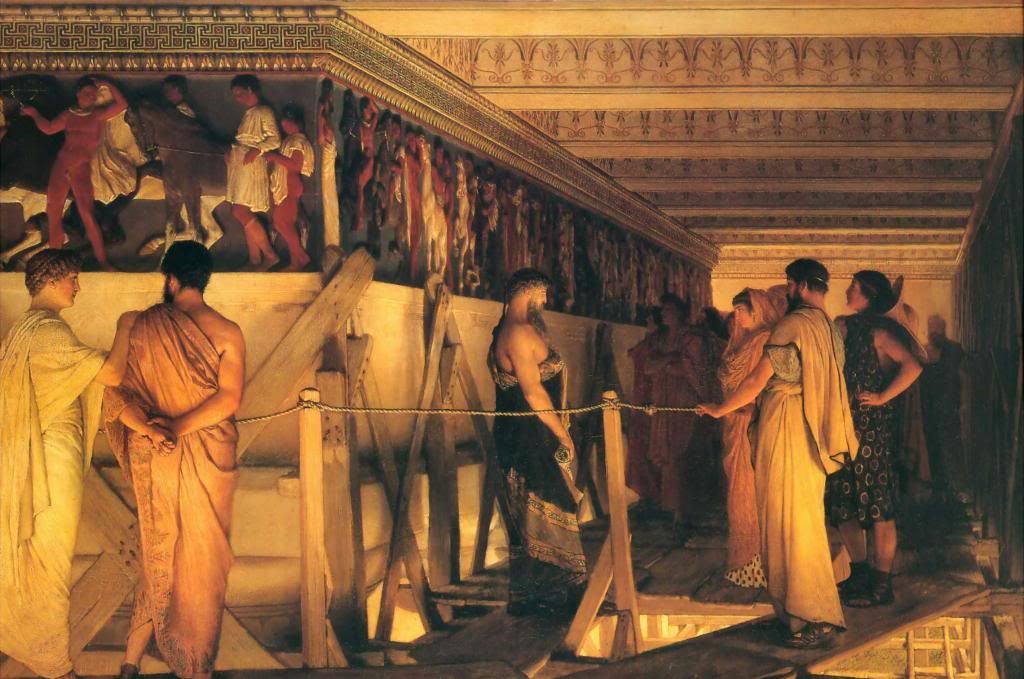 |
| L Alma-Tadema - Phidias Showing the Parthenon Frieze to his Friends |
Many people,
transported back, would find it something of a shock, as we tend to imagine
Greek statuary to be polished, white marble when in fact they were highly, and
perhaps to our eyes garishly, painted. We have known this for a long time but
we still picture them in their modern state, white as marmoreal snow, as we can
see them in museums and galleries today, (we also imagine English churches to
be bare stone, when they were brightly painted too).
 |
| The Ruins of the Acropolis |
Many Greek cities have an
Acropolis but the Acropolis is that at Athens and on it was built the
Parthenon, the temple built by the Athenians to their patron goddess, Athene.
Inside it was a statue of Athene Parthenos - Αθηνα Παρθένος – Athene
the Virgin, a massive forty-foot-tall sculpture made of wood, ivory and
gold, (known technically as chryselephantine), by Phidias.
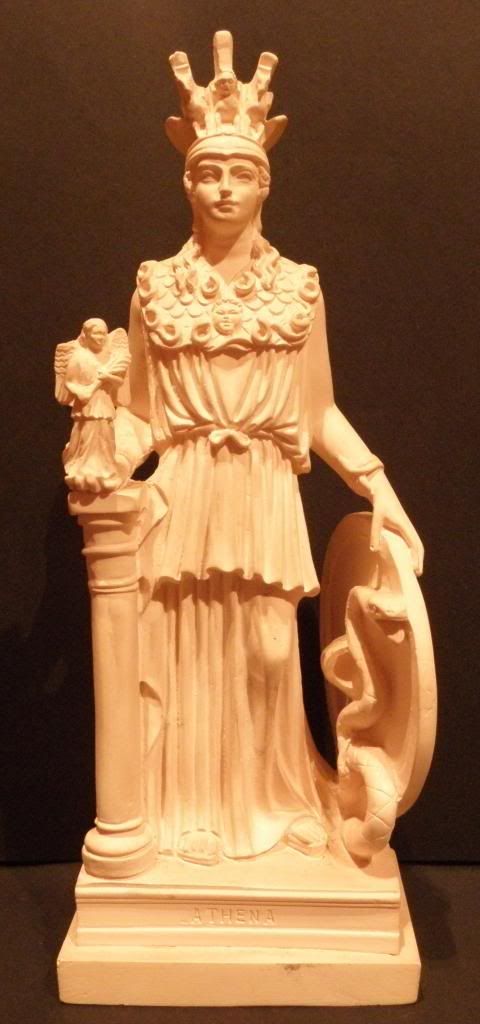 |
| Athene Parthenos statuette |
The second of
my charity shop statuettes bought in Clitheroe is a copy of the Athene
Parthenos, as it has been reconstructed from Classical accounts of the original,
which has long been lost.
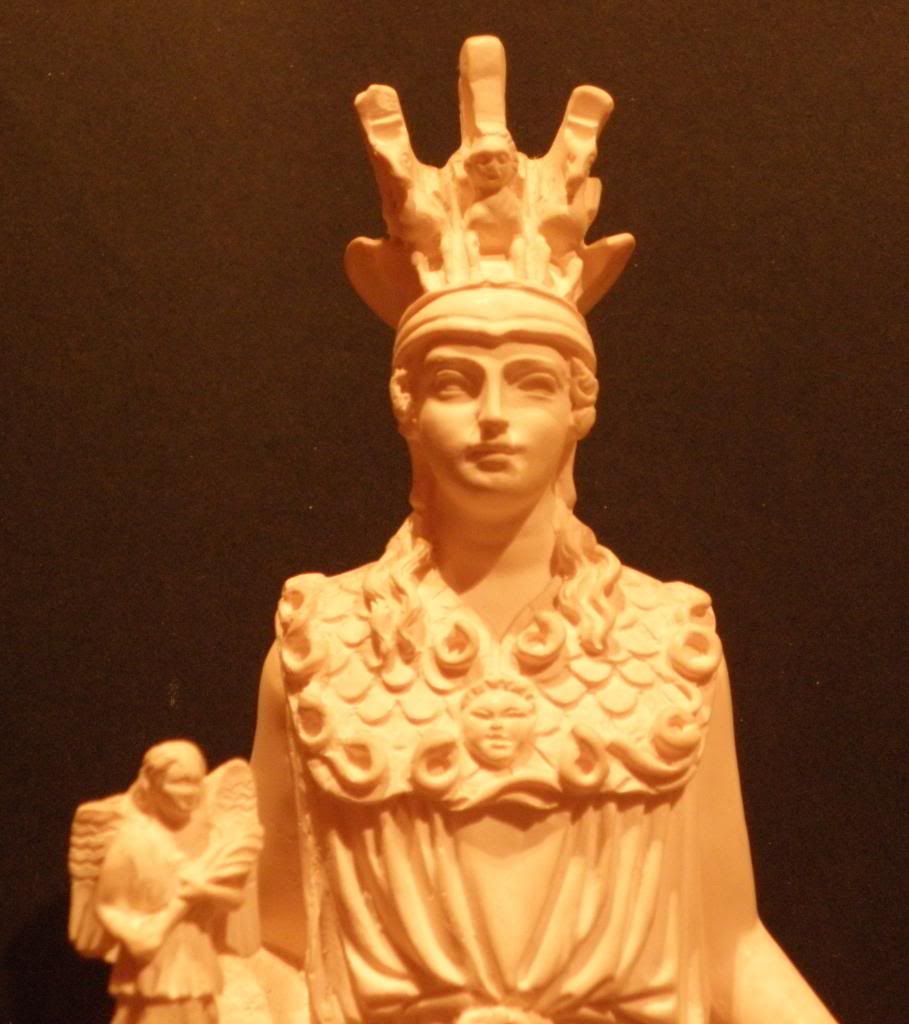 |
| The Helmet and the Aegis |
She wears her crested helmet, with a sphinx in the
centre flanked by a pair of pegasos; her hair is long and divided into two
curled tresses.
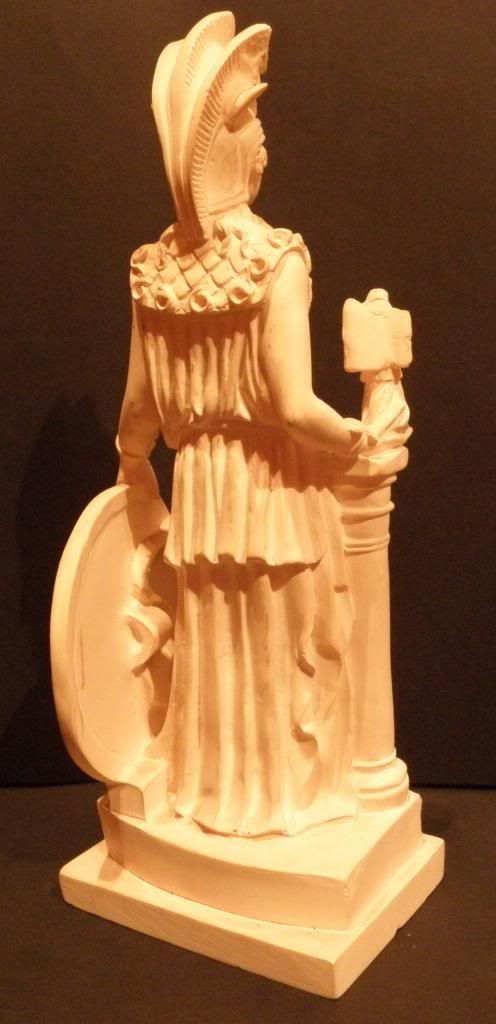 |
| Reverse of the Statuette |
Her sleeveless talaric chiton is cinched at the waist, her
weight is carried on her right leg with her left leg bent slightly at the knee
and she wears a breastplate – the Ægis -decorated with snakes and the face of
Medusa.
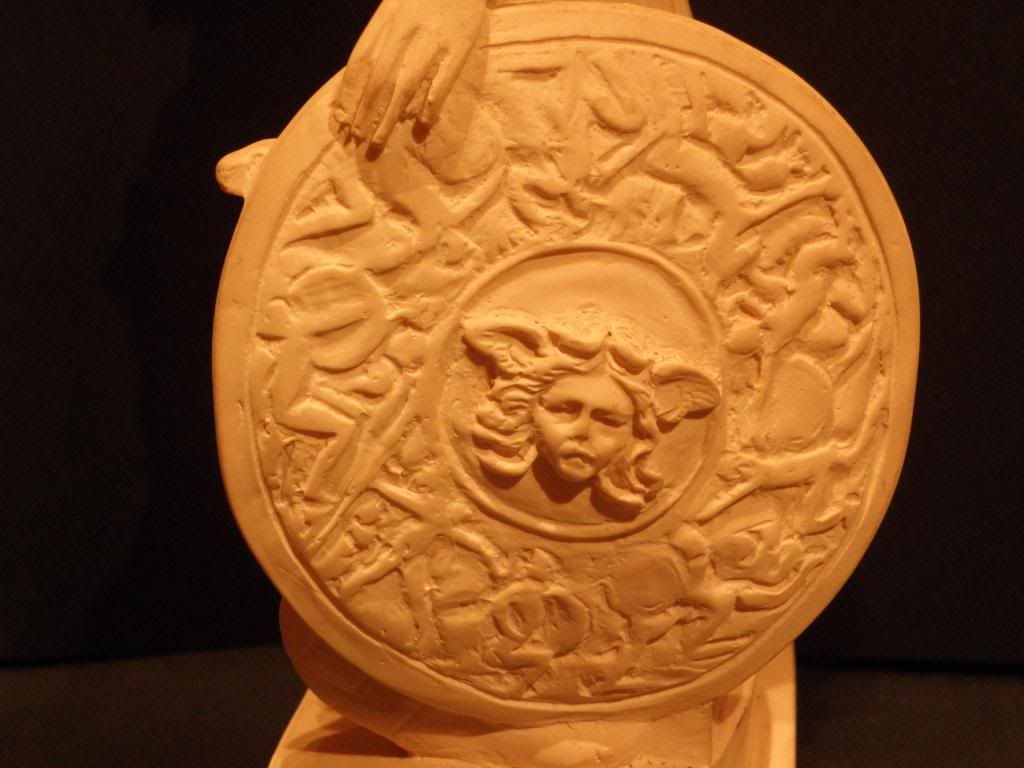 |
| Close up of the Shield |
Her left hand, with a serpent coiled around her wrist, rests on her
shield decorated with the head of the gorgon, the gorgoneion, and
features the battle of the Greeks and the Amazons, similar to the
Amazonamachian Strangford shield in the British Museum.
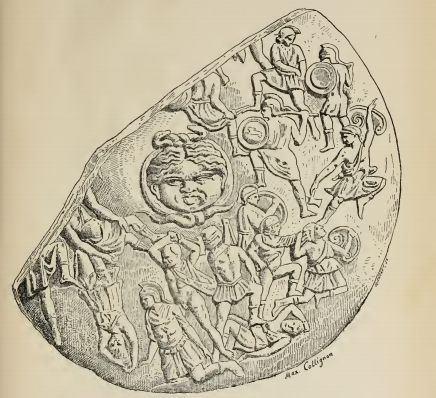 |
| The Strangford Shield |
Between the shield and
Athene is the serpent Erichthonius, coiled and rearing its head.
 |
| Close up of Erichthonius |
The right hand
rests on a pillar with a Doric capital and supports a winged figure of Nike,
‘Victory’, who carries a palm frond (the original figure of Victory stood six
feet tall and was made of ivory).
 |
| Close up of Nike |
It is a possibility that the column was not
part of the original statue as envisioned by Phidias but was added as a
necessary support at a later stage. The original statue was built around a
wooden central core, with bronze plates shaped and covered by gold sheets
weighing more than two thousand pounds, with the face, arms and hands covered
by carved ivory. She once held a lance, often now omitted in representations,
but we cannot be sure of its true position. Pausanius, in a passage of unusual
detail for him, gave a description and we have smaller votive statues, engraved
gems and coins based on Phidias’s major work that remain, so we can say that we
have a good idea of how the Athene Parthenos would have looked.
 |
| The Varvakeion Statuette |
A Roman
replica, now in the Athens National Museum, known as the Varvakeion statuette
is the perhaps the nearest representation of the original that remains; it is
carved from Pentelic marble and stands about three feet six inches tall (about
one twelfth of the original). This piece was discovered in 1881 by workmen
carrying out routine maintenance works in a small street north of the ancient
northern boundary wall of the city (the Varvakeion, hence the name given to the
statuette); it was face down in the brick apse of a private Roman house, and
dates from the second, or possibly even third, century CE, placing it some five
hundred years older than Phidias’s original.
It seems likely that the figure
was a votive figure, maybe incorporated into the fabric of the house as a
protective offering, rather than a tourist souvenir, which would more likely
have taken to form of decorated, painted plates. There are traces of gilding
and red and yellow paint on the statuette, indicating that the painting of
statues continued in Greece into the Roman period. The Varvakeion Athene caused
quite a stir when it was first uncovered and was over-praised in the ensuing
enthusiasm that followed but it does give us some idea of what Phidias’s
masterpiece might have looked like.
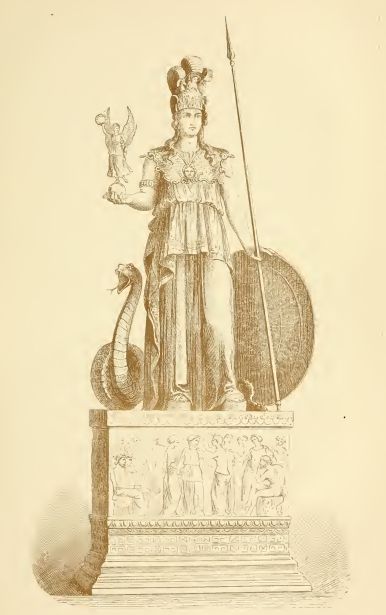 |
| Speculative recreation made prior to finding the Varvakeion statuette |
Interestingly, it is made from marble,
which was considered an inferior material in ancient Greece, suitable for
architectural statuary when the superior works were made from gold, silver,
ivory and bronze. The Phidean work was a cult statue, which was worshipped
within the Parthenon, in turn the temple to the goddess Athene Polias, the
Goddess of the State, of whom Athene Parthenos was an aspect, and whose name in
common parlance was applied to the temple itself. As Parthenos, she had no
special cult of her own; she was worshipped as Polias, as Nike or as Hygieia,
with rituals, temples and priestesses dedicated to these special aspects, but
none of these applied to Parthenos. Likewise, we use the term ‘the Parthenon’
whereas to the Greeks it was ό ύεως της Αθηνας της Πολιάδος – the Temple
of Athene Polias – or simply ό ύεώς – the Temple.
Incidentally, I paid £2.50 for the statuette I wrote
about yesterday and £3 for the Athene Parthenos shown today. If you like them,
you can find them for sale on-line. Expect to pay just over £40 each.
No comments:
Post a Comment